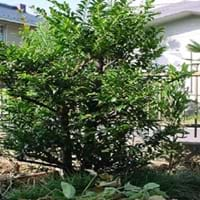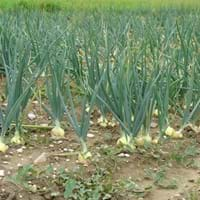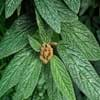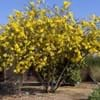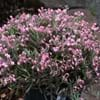Life Span
Perennial
Perennial
Type
Broadleaf Evergreen
Bulb or Corm or Tuber
Origin
Eastern Asia, Southern Asia, Southeastern Asia, India, China
World/Pandemic, North America, Europe, Russia/Siberia, Northern Africa, Asia, India
Types
Taonabo japonica, Cleyera ochnacea
Not Available
Number of Varieties
Not Available
Habitat
secondary forest, Temperate Regions
Cropland, Farms, gardens
USDA Hardiness Zone
6-10
Not Available
AHS Heat Zone
Not Available
Not Available
Habit
Oval or Rounded
Not Available
Flower Color
White, Yellow
White, Yellow green
Flower Color Modifier
Bicolor
Bicolor
Fruit Color
Red
Not Available
Leaf Color in Spring
Red, Bronze
Blue Green, Yellow green
Leaf Color in Summer
Dark Green
Green, Gray Green
Leaf Color in Fall
Dark Green
Green, Gray Green, Yellow green
Leaf Color in Winter
Red, Dark Green, Bronze
Not Available
Plant Season
Spring, Summer, Fall, Winter
Spring, Summer
Sunlight
Partial Sun, Partial shade, Full Shade
Full Sun, Partial Sun
Type of Soil
Clay, Loam
Loam, Sand
The pH of Soil
Acidic, Neutral
Neutral
Soil Drainage
Well drained
Well drained
Bloom Time
Late Spring, Early Summer
Spring, Late Spring, Early Summer
Tolerances
Drought, Salt
Drought
Where to Plant?
Ground
Ground, Pot
How to Plant?
Seedlings, Stem Planting
Seedlings, Sets
Plant Maintenance
Medium
Medium
Watering Requirements
Does not require lot of watering, occasional watering once established
Keep the ground moist but not water-logged, Requires a lot of watering, Water twice a day in the initial period
In Summer
Lots of watering
Lots of watering
In Spring
Moderate
Moderate
In Winter
Average Water
Average Water
Soil pH
Acidic, Neutral
Not Available
Soil Type
Clay, Loam
Not Available
Soil Drainage Capacity
Well drained
Well drained
Sun Exposure
Partial Sun, Partial shade, Full Shade
Full Sun, Partial Sun
Pruning
Prune if you want to improve plant shape, Remove dead branches
Remove damaged leaves, Remove dead branches, Remove dead leaves
Fertilizers
14-14-14 Fertilizer, All-Purpose Liquid Fertilizer, Compost
All-Purpose Liquid Fertilizer
Pests and Diseases
Downy mildew, Leaf rust, Phytophthora Root Rot, Red blotch
Red blotch
Plant Tolerance
Cold climate, Humidity, Soil Compaction
Drought
Flowers
Insignificant
Showy
Flower Petal Number
Single
Single
Showy Fruit
Yes
Not Available
Edible Fruit
No
Not Available
Fragrant Bark/Stem
No
Yes
Foliage Texture
Medium
Medium
Foliage Sheen
Glossy
Matte
Attracts
Ants, Fruit Bats, Snails, Squirrels
Not Available
Allergy
Asthma, Nausea, Pollen, sneezing
Not Available
Aesthetic Uses
Showy Purposes
Not Used For Aesthetic Purpose
Beauty Benefits
Provides herbal hair care, Remove blemishes
Not Available
Environmental Uses
Air purification, Insect Repellent, Shadow Tree
Air purification
Medicinal Uses
Acne, Arthritis, Eczema, Oedema
Asthma, Bronchitis, cholesterol-lowering, Cough, Diabetes, Digestion problems, Diuretic, High blood pressure
Part of Plant Used
Flowers, Leaves
Whole plant
Other Uses
Application in Furniture, Application in Handicrafts, Showy Purposes, Traditional medicine
Culinary use
Used As Indoor Plant
Sometimes
Yes
Used As Outdoor Plant
Yes
Yes
Garden Design
Container, Feature Plant, Foundation, Hedges, Mixed Border, Screening, Wind Break
Not Available
Botanical Name
TERNSTROEMIA gymnanthera
ALLIUM cepa 'Vidalia'
Common Name
Sakaki
Garden Onion, Sweet Onion, Vidalia Onion
In Hindi
Sakaki
मीठा प्याज
In German
Sperrstrauch
Sweet Onion
In French
Sakaki
oignon doux
In Spanish
Sakaki
Cebolla dulce
In Greek
Sakaki
γλυκό Κρεμμύδι
In Portuguese
Sakaki
Cebola doce
In Polish
Sakaki
słodka Cebula
In Latin
Sakaki
Dulcis cepa
Phylum
Magnoliophyta
Tracheophyta
Class
Magnoliopsida
Magnoliopsida
Order
Theales
Asparagales
Family
Theaceae
Liliaceae
Clade
Angiosperms, Asterids, Eudicots
Angiosperms, Asparagales, Monocots
Tribe
Not Available
Not Available
Subfamily
Not Available
Not Available
Importance of Sakaki and Sweet Onion
Want to have the most appropriate plant for your garden? You might want to know the importance of Sakaki and Sweet Onion. Basically, these two plants vary in many aspects. Compare Sakaki and Sweet Onion as they differ in many characteristics such as their life, care, benefits, facts, etc. Every gardener must at least have the slightest clue about the plants he wants to plant in his garden. Compare their benefits, which differ in many ways like facts and uses. The medicinal use of Sakaki is Acne, Arthritis, Eczema and Oedema whereas of Sweet Onion is Asthma, Bronchitis, cholesterol-lowering, Cough, Diabetes, Digestion problems, Diuretic and High blood pressure. Sakaki has beauty benefits as follows: Provides herbal hair care and Remove blemishes while Sweet Onion has beauty benefits as follows: Provides herbal hair care and Remove blemishes.
Compare Facts of Sakaki vs Sweet Onion
How to choose the best garden plant for your garden depending upon its facts? Here garden plant comparison will help you to solve this query. Compare the facts of Sakaki vs Sweet Onion and know which one to choose. As garden plants have benefits and other uses, allergy is also a major drawback of plants for some people. Allergic reactions of Sakaki are Asthma, Nausea, Pollen and sneezing whereas of Sweet Onion have Not Available respectively. Having a fruit bearing plant in your garden can be a plus point of your garden. Sakaki has showy fruits and Sweet Onion has no showy fruits. Also Sakaki is not flowering and Sweet Onion is not flowering . You can compare Sakaki and Sweet Onion facts and facts of other plants too.
